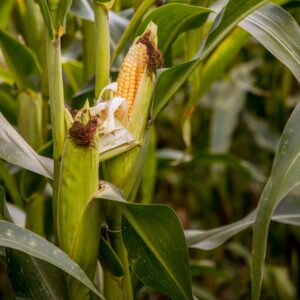
In terms of value, coffee is one of the world’s most important commodities.
Coffee is a vital crop for developing countries, providing vital foreign exchange earnings and an income for farmers. It is also an ideal crop for areas with poor infrastructure, as it is one of the few tropical horticultural crop products that can be stored for relatively long periods without perishing.
There are two main species of economic importance: Coffea canephora which produces coffee known commercially as Robusta, and Coffea arabica which produces Arabica.
Coffee is indigenous to the highlands of Ethiopia and the Boma plateau in the Sudan. Here, some 1 300 to 1 800 metres above sea level, coffee trees occur naturally. Today coffee is grown across the world.
Source: Tim Buckland; Schalk Schoeman (ARC-TSC), www.arc.agric.za/arc-itsc/Pages/Coffee-Information.aspx and http://dev.ico.org/documents/eb3603r1e.pdf
There are three main coffee growing regions:
Brazil, Colombia and Ethiopia are the top Arabica producers, while Vietnam, Brazil and Indonesia are the top Robusta producers. Looking at Arabic and Robusta combined, the top five coffee producing countries are Brazil, Vietnam, Colombia, Indonesia and Ethiopia (USDA, 2022).
Links to many role players across the world can be found at www.coffeeresearch.org/links/organizations.htm.
Source: adapted from www.iaco-oiac.org/en/news/africas-challenge-creating-resilient-and-sustainable-coffee-value-chain
South Africa imports almost all of its coffee. We do not produce more than 100 tonnes per annum (i.e. 0.4% of what we drink in South Africa). Importing coffee into RSA is currently a potentially lucrative business. When international prices increase, local producers could benefit significantly. However, the coffee trade is fraught with risk.
Although coffee will grow well in almost any frost free area with well drained soil, the best coffee producing areas in South Africa are the coastal areas of Southern KwaZulu-Natal, the Drakensberg escarpment of Mpumalanga, and Limpopo.
Farming coffee and exporting the raw bean is not seen as a viable option in this country, largely because it is a labour-intensive crop. There are, however, a number of farmers who have made coffee a profitable venture (see “Some coffee producers” heading down this page). Despite this, coffee farming looks to remain a smallish cottage industry that will rely on tourism, direct marketing and value adding to fill the necessary gaps.
Coffee, as one of the world’s most important commodities in terms of value, is an industry that could be developed and which could create jobs.
Sources: Tim Buckland; Schalk Schoeman (ARC-TSC) and a project proposal found at http://dev.ico.org/documents/eb3603r1e.pdf
A projected trend in the global consumption of coffee provides a very lucrative opportunity for South Africa to increase the production of coffee beans to meet both domestic and export demand. It is worth noting that some coffee bean producers in South Africa such as Beaver Creek are already exporting to countries like Japan, the United Kingdom (UK), the United States, Denmark and Germany. The potential to extract more value throughout the coffee value chain should continue to be explored by the agricultural sector.
Source: Gilberto Biacuana (see “Websites and publications” heading)
For more information, contact Schalk Schoeman at the ARC-TSC (Tropical and Subtropical Crops), 013 753 7000 or schalk [at] arc.agric.za.
Further reference:
Because of the high level of technical skills required for this crop, a well co-ordinated larger scale co-operative type of operation above that of small-scale farming is recommended. The chances of this project succeeding would be heightened if it added value by roasting, marketing and distributing the end project.
Source: Tim Buckland (adapted from an email)
Schalk Schoeman’s advice to New Farmers:
Contact: Schalk Schoeman at Tel: 013 753 7000 or email schalk [at] arc.agric.za
Further reference:
The Agri Processing Index (API) developed by the Western Cape Department of Agriculture in 2015 ranked the potential of some 130 different products, measuring employment potential, production performance and global market growth. Roasted Coffee and Coffee Substitutes was at number five on the Top 20 products list, showing the potential of backing this product.
Department of Trade, Industry and Competition (the dtic)
Agro-processing is the subsector which enjoys a substantial amount of support from the dtic.
Department of Agriculture, Land Reform and Rural Development (DALRRD)
Find the Food Safety and Quality Assurance pages at www.dalrrd.gov.za.
Further reference:
Companies involved
NOTE: Producers are mostly involved in the whole value chain, importing, roasting, selling – and serving! – coffee.
Training and research
Visit the websites listed earlier on this page.
Available on the Department of Agriculture, Land Reform and Rural Development website is “Coffee”, a production guideline. This includes notes on cultivation practices and post-harvest handling.
Call the ARC-TSC at 013 753 7000 or email infotsc [at] arc.agric.za for Production guidelines for Coffee (Anderson T. & Schoeman P.S.)
Order online at www.arc.agric.za, call 012 842 4017 or send an email to [email protected] for the following publications, available from the ARC Agricultural Engineering: Agro-processingof Industrial Crops (chicory, coffee, sugar cane, tea).
The SADC Secretariat and German Development Corporation‘s Profiling of the Regional Agro-Processing Value Chains in the SADC Region (March 2019) included a look at coffee.
Clowes R (ed.). 2015. Handbook for Sustainable Coffee Production in Malawi. Available at http://imanidevelopment.com/wp-content/uploads/2015/06/Handbook-For-Sustainable-Coffee-Production-In-Malawi.pdf
www.coffeeandhealth.org – “from the institute for scientific information on coffee”
The website www.coffeeresearch.org is “dedicated to advancing coffee quality through education and science”.
Find articles like “The Health Benefits of Drinking Coffee” at https://dripped.coffee.